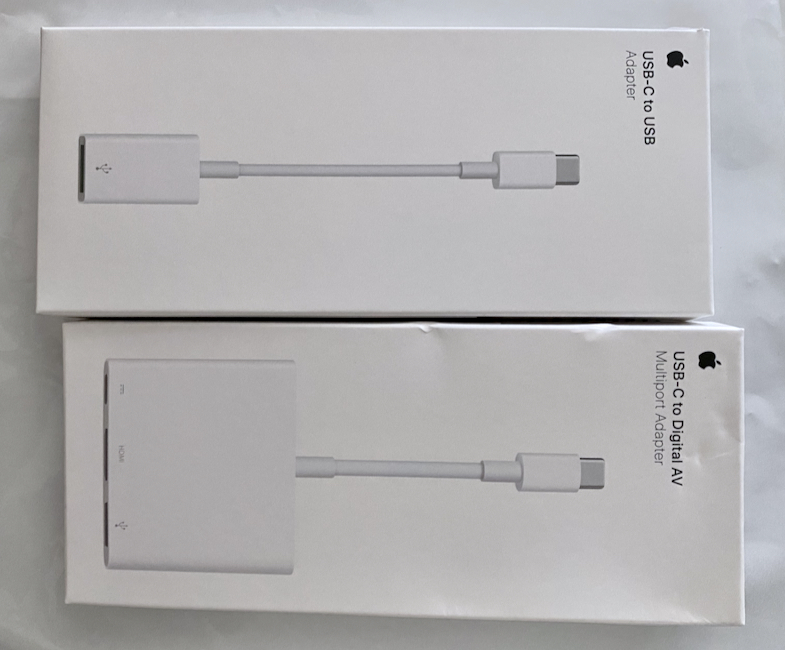|
|
Wednesday Diversion: Online Teaching, 2 Steps Forward, 3 Steps Back; Apple Stock SplitBy Graham K. Rogers
With online teaching I have found that assignments for the students need some special management and this has taken more time than I expected this week. With 3 groups and about 100 students, if I set a task that means 100 emails with 100 PDF downloads, and 100 markups on the iPad: more if any student sends back a corrected version. Most of my weekend and the beginning of this week were taken up by two such tasks. I won't do that again: you see what I mean by management? With a new HP monitor for the online classes, I decided to move the room about and also use a smaller writing table. I gave this a try out first before teaching in case the setup was too heavy for the table, but it held up and gave me more room to work in as well as providing a neutral background.
I am waiting for Nikon to release a Mac version of its recent DSLR webcam software, which is just for Windows right now. Petapixel report that Sony has joined the webcam game with release of an application that allows its cameras to be used as webcams. However, DL Cade (PetaPixel) writes, "Just like Canon, Fuji, and Nikon, the first version of this utility is Windows-only, with no mention about if or when a Mac version will be on the way".

Logitech 525 Webcam on HP Monitor
At the beginning of the week, having been asked to teach a group of graduate students I went to see the setup in the Department of Civil Engineering. Half the students will be in a small conference room and half will attend online. I had a look at the setup, which uses a better Logitech camera than I have, and later scheduled a pair of Webex meetings for the group. With the classes being run from home, the USB-C adapters I usually keep in my backpack are in permanent use: the HDMI adapter for the monitor and the USB 2 adapter for the webcam. With another course on campus I picked up a couple of extra adapters this week to save me disconnecting the ones at home.

USB-C adapters for USB and HDMI
Many of the students are less willing to react, however. Producing vocabulary for example is an exercise that has worked well in the classroom where I can walk around and make encouraging noises, but the output with online teaching is poor, although the point is not wholly that the students come up with lists of words. The interaction, comment and input from me working with them is more important. Reading is essential. Language learners need realistic input and I have plenty of texts to give them. Going round a class is usually fairly effective, but online it is clear that some students are not following, so when I ask students to a"read the next sentence", they may not know which sentence they need to read out. This wastes time and slows the class down. If I ask a question during the exercise (say for the meaning of a word), there is often poor response, even though I instruct students that they should ask me before we start the reading if they have any words they do not know. All this is learning for me too as I need to understand which types of teaching are less effective. I have been delivering worksheets that I use in the class while the class is running, by providing a link in LINE and the same link in the chat feed in Webex so students can download the PDF in a browser. I have to set this up before the class by uploading the materials to my website, then opening the PDF in browsers on my iPhone and on the Mac. When the time comes, I copy and paste that link and deliver that to the students. Unfortunately, as with the classroom-based instruction, students share the information with their friends, as if providing the answers without thinking is the way to learning. This is a cultural problem: they need to be seen to be correct, even if they have no idea how they arrived at the answer. I have some projects later that are aimed at individual input so their friends cannot provide the content, but might advise. I am OK with that.
With the stock split imminent, the way some indexes handle AAPL changes. As it uses the valuation, Apple's weighting in NASDAQ will continue to rise but Mark DeCambre (MarketWatch) and several others are concerned that the lower share price will release untold woe. With a split, the value of Apple (share by share) will fall so its position in the DOW will be lower and the lower weighting will mean that the DOW will also lose some of its force. Many funds are linked via robot trading (algorithms) to the DOW and when the Index falls below a certain level this triggers an automatic sell off. It works the other way too of course, so if there were a rise in the Index, there would be an automatic buy. As we have seen in the UK when critical exams were cancelled due to COVID-19 adjusted teacher input was intended to produce a fair result for hopeful university entrants. This did not take into account the eugenicists. The messy use of an algorithm, developed with the help off a company linked to Gove and Cummings (David Conn, Guardian), gave thousands of students lower grades than they might have had if they had been able to sit the exams (some had impossible U grades given for example when they don't turn up). Algorithms and programmed trading are no match for real life situations in some cases. In the case of the stock market, there have been crashes because of this. With the exams, most students should be OK now as the government was forced into another U-turn. Johnson was criticised for this débacle and there was more pressure put on him, but if he were to go, it would be quite likely that Gove would step up. As I have mentioned before, CCN don't seem to be able to produce anything but negative reports on Apple. With long-time shareholder, Berkshire Hatahaway having made several billion dollars with Apple by ignoring the calls to sell, sell, sell, sell, sell, Mark Emem on CCN thinks it is time that Warren Buffet trim his stake. Emem calls Apple "the iPhone maker", revealing that he might not be fully up to date. The report is littered with charts and other input to support the case, but like many, he misses the point (or points): neither Apple, nor Berkshire Hathaway (Buffet) have ever listened to the pundits, nor do they behave like normal companies; and they have made a lot of money. Regarding my comment about CCN negativity: there is a sidebar on the Buffet article page of Apple-related links, not one of which is positive.
I tried Lightroom when it first appeared but had already decided on the now-defunct Aperture. It may be ok for organizing which is an essential for me, but almost none of the apps allow me to synchronize with my other devices. That is the essential for me, and currently Photos (for all its shortcomings, particularly on iOS) is the way I handle that. Working with photos needs me to use albums to assist in that organization and keywords for search. On macOS and iOS where photos has limitations, there are many other editing apps I use to take up the slack, especially Darkroom and Pixelmator Photos, which is Aperture-like, without file organization.

Trump made another Order and the time limit was reduced, with China clearly not happy. Whatever happens, there will be retaliation. Now it seems, according to online comment, a Financial Times tweet, Larry Ellison and Oracle are interested. With some 3 billion regular users, this makes sense but I sense a number of hurdles before any of this is settled.
Graham K. Rogers teaches at the Faculty of Engineering, Mahidol University in Thailand. He wrote in the Bangkok Post, Database supplement on IT subjects. For the last seven years of Database he wrote a column on Apple and Macs. After 3 years writing a column in the Life supplement, he is now no longer associated with the Bangkok Post. He can be followed on Twitter (@extensions_th) |
|


 With this change, I dug into the odds-and-ends drawer and found the Logitech camera I knew was in there. To test this, I tried Facetime on the Mac. Although the Mac's own camera worked properly, despite being a little grainy, the Logitech device would not focus. I did find that I could have a perfectly sharp image of my fingernails, but my face was blurred. I do use my hands in an expressive way while teaching, but the face and body are more important.
With this change, I dug into the odds-and-ends drawer and found the Logitech camera I knew was in there. To test this, I tried Facetime on the Mac. Although the Mac's own camera worked properly, despite being a little grainy, the Logitech device would not focus. I did find that I could have a perfectly sharp image of my fingernails, but my face was blurred. I do use my hands in an expressive way while teaching, but the face and body are more important.
 I am not a fan of Adobe products anyway: the website annoyed me and the move to subscriptions totally put me off. I am not a professional photographer so don't need all the tools, but in any case I can find most on Affinity Photos, Pixelmator (a couple of apps), Graphic Converter, the Open Source, Gimp (see icon) and many others.
I am not a fan of Adobe products anyway: the website annoyed me and the move to subscriptions totally put me off. I am not a professional photographer so don't need all the tools, but in any case I can find most on Affinity Photos, Pixelmator (a couple of apps), Graphic Converter, the Open Source, Gimp (see icon) and many others.
